
Browse an alphabetical list of articles about the Holocaust and World War II. Learn more about topics such as the Nazi rise to power, how and why the Holocaust happened, life in Nazi camps and ghettos, and the postwar trials.
<< Previous | Displaying results 601-647 of 1105 for "Article" | Next >>
The Lachwa ghetto was established in Łachwa, Poland in April, 1942. Learn more about the ghetto and uprising.
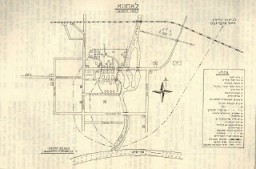
The Lackenbach internment and transit camp for Roma, located in what had been eastern Austria, was a departure point for deportations to Lodz and Auschwitz.
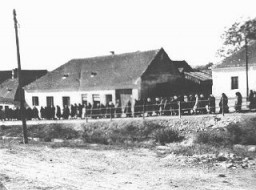
After WWII, many Holocaust survivors, unable to return to their homes, lived in displaced persons camps in Germany, Austria, and Italy. Read about Lampertheim DP camp.

After WWII, many Holocaust survivors, unable to return to their homes, lived in displaced persons camps in Germany, Austria, and Italy. Read about Landsberg DP camp.
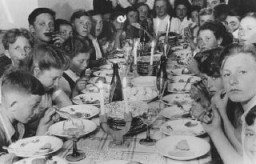
Between 1940 and 1944, Latvia was occupied by the Soviets and then by the Germans. These occupations had grave consequences for Jews in Latvia. Learn more.
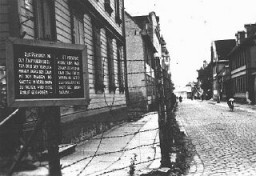
The Law against the Founding of New Parties proclaimed the Nazi Party as the only political party in Germany, which became a one-party dictatorship led by the Nazis.
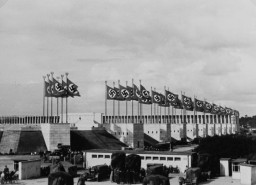
After the Nazi rise to power in 1933, the German system of justice underwent "coordination" (alignment with Nazi goals). Learn more about law and justice in the Third Reich.
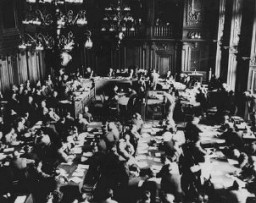
Learn more about the Law for the Imposition and Implementation of the Death Penalty, which the Nazis enacted after the Reichstag Fire Decree in 1933.
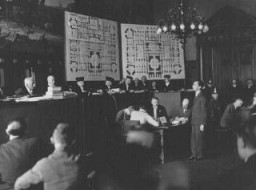
Learn about the role of the legal profession as the Nazi leadership gradually moved Germany from a democracy to a dictatorship.
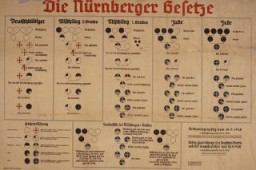
The Law on the Head of State of the German Reich was the last step in destroying democracy in interwar Germany and making Adolf Hitler a dictator. Learn more.
From 1940 to 1944, Le Chambon-sur-Lignon and neighboring villages provided shelter to some 5,000 people, among them Jews fleeing persecution.
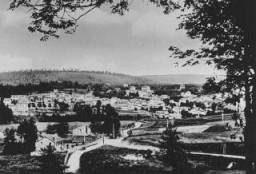
Read the Jewish Partisan Educational Foundation's short biography of Leah Johnson.
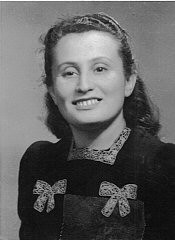
The Lebensborn program, created by the SS in late 1935, was intended to promote population growth among those whom Nazi authorities deemed “racially valuable.”
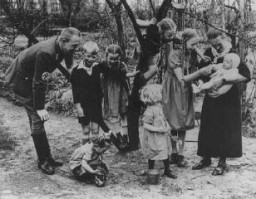
The concept of Lebensraum, “living space,” was as a critical component in the Nazi worldview that drove both its military conquests and racial policy.
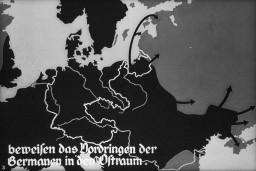
After WWII, many Holocaust survivors, unable to return to their homes, lived in displaced persons camps in Germany, Austria, and Italy. Read about Leipheim DP camp.
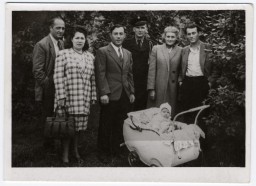
Learn more about the Lend-Lease Act, which was the American policy that extended material aid to the WWII Allied powers from 1941-1945.
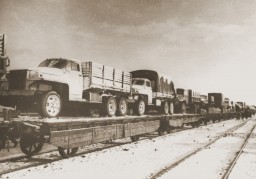
Leni Riefenstahl was a German dancer, actress, and film director best known for her imposing propaganda films in support of the National Socialist (Nazi) Party.
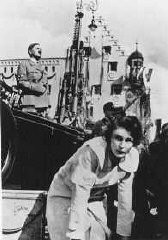
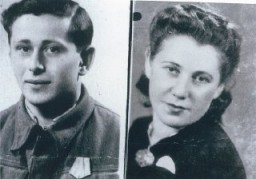
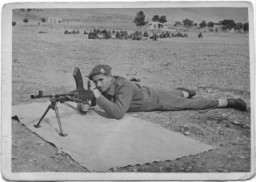
During World War II, Slovene general Leon Rupnik collaborated with the forces of Fascist Italy and Nazi Germany. Rupnik was appointed president of the Provincial Government of the German-occupied Province of Ljubljana in 1943. He was convicted of treason and executed in 1946. In 2020, his sentence was annulled on a technicality.
Read the Jewish Partisan Educational Foundation's short biography of Leon Senders.
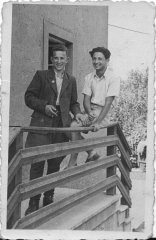
Leon Trotsky was a communist and close associate of Vladimir Lenin. His works were burned in the Nazi book burnings of May 1933. Learn more.
Under the Vichy regime, the Les Milles camp held foreign Jews before emigration or, in most cases, deportation to German concentration camps and killing centers.
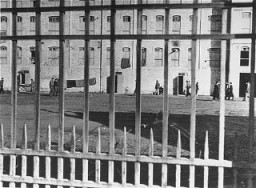
Beginning in 1933, the Nazi regime harassed and destroyed lesbian communities and networks that had developed during the Weimar Republic.
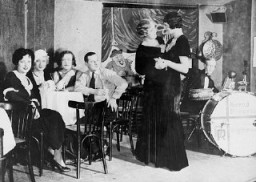
The first major Nazi camp was liberated by Allied troops in July, 1944. Learn more about liberation of camps towards the end of World War II.
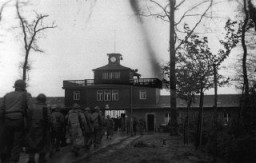
Learn more about the end of Nazi tyranny in Europe and the liberation of camps and other sites of Nazi crimes. This article includes dates of liberation of some of the camps.
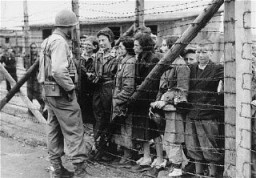
The liberation of concentration camps toward the end of the Holocaust revealed unspeakable conditions. Learn about liberators and what they confronted.

German forces razed the town of Lidice in June 1942 in retaliation for the death of Nazi leader Reinhard Heydrich. Learn about the assassination and reprisal.

After WWII and the fall of the Nazi regime, Holocaust survivors faced the daunting task of rebuilding their lives. Listen to Aron and Lisa Derman's story.

After WWII and the fall of the Nazi regime, Holocaust survivors faced the daunting task of rebuilding their lives. Listen to Blanka Rothschild's story.
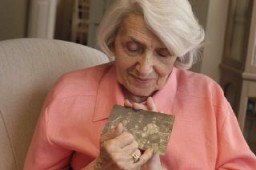
After WWII and the fall of the Nazi regime, Holocaust survivors faced the daunting task of rebuilding their lives. Listen to Norman Salsitz's story.
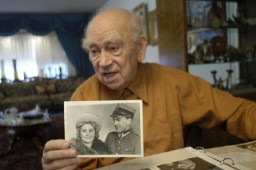
After WWII and the fall of the Nazi regime, Holocaust survivors faced the daunting task of rebuilding their lives. Listen to Regina Gelb's story.
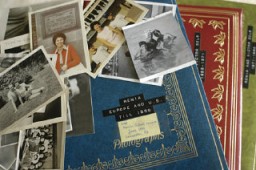
After WWII and the fall of the Nazi regime, Holocaust survivors faced the daunting task of rebuilding their lives. Listen to Thomas Buergenthal's story.
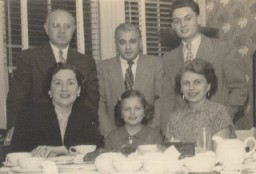
When World War II ended in 1945, six million European Jews were dead, killed in the Holocaust. About 1.5 million of the victims were children.
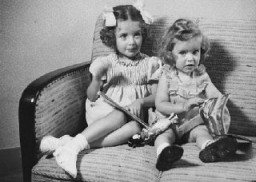
During the Holocaust, Jews were forced into ghettos with terrible living conditions, overcrowding, and starvation. Learn more about life in the Lodz ghetto.
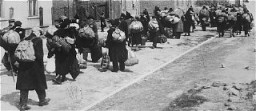
After WWII, many Holocaust survivors, unable to return to their homes, lived in displaced persons camps in Germany, Austria, and Italy. Read about Lindenfels DP camp.
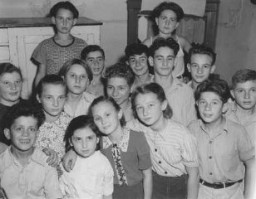
Lion Feuchtwanger was a bestselling German Jewish author who was persecuted under the Nazi regime. His works were burned in the Nazi book burnings of May 1933.
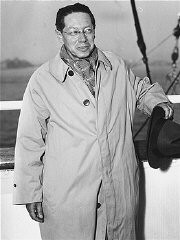
As part of the Holocaust, the Germans murdered about 90% of Jews in Lithuania. Read more about the tragic experience of Lithuanian Jews during World War II.
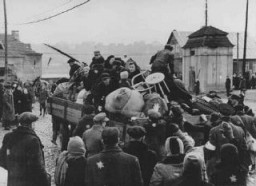
The Germans and their collaborators used paper records and local knowledge to identify Jews to be rounded up or killed during the Holocaust.

Nazi authorities established the Lodz ghetto in 1940. Learn about living conditions and forced labor in the ghetto, as well as deportations to and from there.
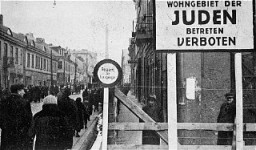
Louis Fischer was an American political historian. In May 1933, his work was burned in Nazi Germany for its sympathy toward Communism. Learn more.
Explore a timeline of key events in the history of the Lublin/Majdanek camp in German-occupied Poland.
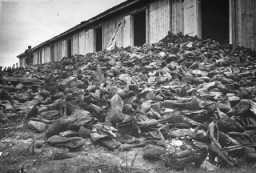
In 1940, the Nazis established Lublin (Majdanek) concentration camp in Lublin, Poland. Learn more about camp administration.
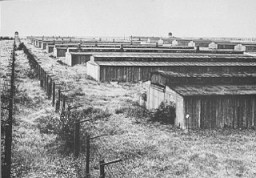
Learn about areas of research related to the number of deaths at the Lublin/Majdanek concentration camp system.
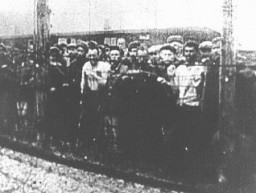
In 1940, the Nazis established Lublin (Majdanek) concentration camp in Lublin, Poland. Learn more about camp conditions.
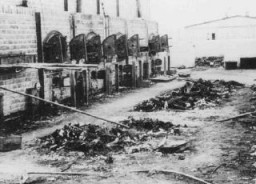
Before WWII, over 3,500 Jews lived in Luxembourg. Under the German occupation, this community was almost completely destroyed. Learn more.
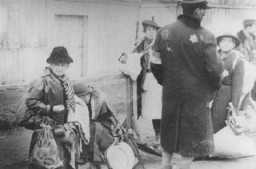
Nazi Germany occupied Lvov, Poland in 1941. Learn about Lvov during World War II, the establishment of the Lvov ghetto, and deportations of Jews from there.
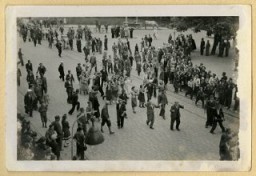
We would like to thank Crown Family Philanthropies, Abe and Ida Cooper Foundation, the Claims Conference, EVZ, and BMF for supporting the ongoing work to create content and resources for the Holocaust Encyclopedia. View the list of donor acknowledgement.